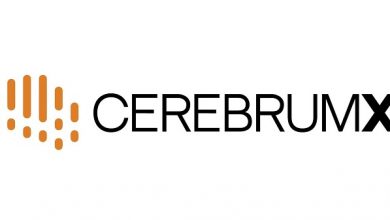Wi-Fi chipset market worth over USD 34.5 billion by 2033

According to a report by Fundamental Business Insights, the wi-fi chipset market size is expected to surpass USD 21 billion in 2023 and reach USD 34.5 billion by 2033, with a CAGR of more than 4.4% over the forecast period.
The increasing use of smartphones, laptops, Internet of Things (IoT) devices, smart home appliances, and other connected devices was driving up demand for Wi-Fi chipsets. This trend was also increasing the need for dependable and fast wireless communication. The proliferation of the Internet of Things (IoT) has led to an increase in the requirement for Wi-Fi chipsets in a wide range of applications. These applications include wearable technology, smart appliances, industrial automation, medical devices, and more. As internet connectivity spread throughout developing countries, the need for low-cost Wi-Fi-capable devices increased, driving the growth of the Wi-Fi chipset market.
More people moved towards automated and networked homes. There was an increasing need for Wi-Fi-enabled devices and the chipsets that powered them. “Smart home devices” encompass a wide range of products, such as thermostats, door locks, security cameras, lighting controls, and smart speakers. In order for these devices to talk to user interfaces such as tablets and smartphones, they need to be connected to Wi-Fi. Interest in home automation among customers has increased. This is due to the ease of remotely or via voice commands controlling numerous parts of their houses, leading to a higher demand for smart home devices.
Wi-Fi signals can be intercepted by unauthorized individuals in an attempt to obtain private information being transferred between devices and access points. This could lead to security lapses and unauthorized access to confidential or sensitive data. Connecting to unsecured public Wi-Fi networks without encryption or authentication exposes users to various threats due to potential security vulnerabilities. Man-in-the-Middle (MitM) attacks and malicious hotspot creation are two ways that attackers can intercept data.
Insights by Type
The IEEE 802.11ax segment accounted for the largest market share over the forecast period 2024 to 2033. Wi-Fi 6 offers a number of technical enhancements over its predecessors. These include Basic Service Set (BSS) Colouring to reduce interference in crowded places and Orthogonal Frequency Division Multiple Access (OFDMA) for more efficient data delivery. Wi-Fi 6, boasting superior theoretical data rates compared to past standards, proves ideal for high-speed connectivity needs, including online gaming. Wi-Fi 6 may have an influence on enterprise networks and IoT installations. It is suitable for businesses and Internet of Things applications, given its ability to provide dependable and efficient connectivity for various devices.
Insights by Band
By 2033, the market value of the Wi-Fi chipset in the Dual segment is expected to surpass USD 28.75 billion. The advantages of these dual-band chipsets include improved performance, less interference, and device interoperability. Dual-band chipsets enable devices to operate on both the 2.4 GHz and 5 GHz bands. This also adaptability reduces interference from other networks and other electrical devices that might use the same frequency. Many older gadgets only support the 2.4 GHz frequency. Due to dual-band networks, these devices can connect. Moreover, they can connect even in environments where more recent technology primarily uses the 5 GHz range.
Insights by MIMO Configuration
It is anticipated that by the end of 2033, the SU-MIMO segment will reach USD 575 million. The need for higher data rates and faster connectivity is still driving SU-MIMO implementation. Customers engaging in data-intensive activities, such as streaming 4K videos, playing online games, and working from home, demand fast Wi-Fi. The growing number of Wi-Fi-capable devices per user or household is one of the primary forces behind SU-MIMO’s growth. On an individual basis, SU-MIMO can help satisfy the needs of different devices for high-speed connections.
Insights by Application
The market for connected home devices comprises voice assistants, security cameras, smart appliances, smart thermostats, smart lighting, smart door locks, and various other products. The concept of smart homes has acquired a lot of traction. Consumers are embracing an increasing variety of smart gadgets for convenience, energy management, entertainment, and security. The market for connected home devices includes voice assistants, security cameras, smart appliances, smart thermostats, smart lighting, smart door locks, and many other products. Moreover, most of these smart home devices use Wi-Fi connectivity to connect to a home network and the internet.
Insights by Region
The Wi-Fi chipset market in North America reached a valuation of USD 4.73 billion in 2023. North America, which comprises the US and Canada, has a well-established and very competitive Wi-Fi chipset industry. The demand for Wi-Fi-capable gadgets has propelled the growth of the Wi-Fi chipset market. Furthermore, these gadgets include everything from laptops and smartphones to smart home appliances and Internet of Things devices.
Asia Pacific is witnessing the fastest market growth between 2024 to 2033. The Asia Pacific area has been a major driver of the global Wi-Fi chipset business because of its large population, increasing urbanization, and growing middle class. The demand from consumers for smartphones, laptops, smart home appliances, and Internet of Things devices has expanded. This also has, in turn, increased the market for Wi-Fi chipsets.
Source:https://www.fundamentalbusinessinsights.com/industry-report/wi-fi-chipset-market-1632




